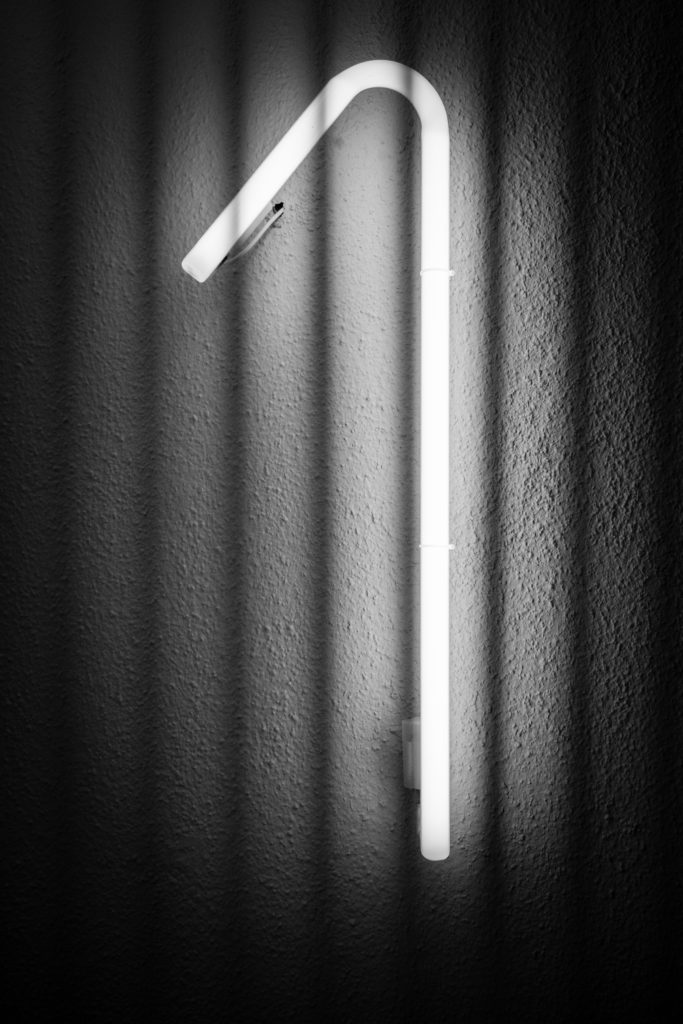We have shared the sentiment that there are no bad designs, just more-thought out designs. However, this doesn’t apply to today’s article at all! It’s no surprise that we can pick up habits from our environments and friends, and not all of them are good for you. The atmosphere of higher education is notorious for picking up bad habits, and in our case, design school can multiply that behavioral action further!
Our dear friend, Merriam Webster, eloquently defines a habit as ‘an acquired mode of behavior that has become nearly or completely involuntary.’ And if left unchecked, bad habits can cost you a lot of time, energy, career, and relationship in the long run. So let’s first identify these six particular habits you may have picked up in design school and see how you can fix them!
1. Sleep Deprivation Being the Norm
Our team at Archi Hacks is a strong advocate of avoiding all-nighters in design school and workforce at all costs. Although they could happen once in a while, this is something you don’t want to normalize out of design school! Health is an essential part of living a fulfilling life and progressing through your career, and to remain healthy, and sleep is one of the best ways to achieve that. In school, distractions would be the main culprit of causing one to lose track of time and end up pulling all-nighters. However, to translate this into the industry, while distractions are still present, a probable cause of sleep deprivation could be that you are either taking on too much work or given unrealistic deliverables and deadlines.

With the former sentiment, you may find yourself taking on additional work or requiring to work overtime to complete something. Let’s not jump the gun here, but be aware that this overworking behavior could turn into workaholism amongst other harmful habits we want to get rid of.
This is an opportunity for you to discuss the mental fatigue that’s building up with management, and that you need help. It’s never shameful to ask for help! Maybe overworking isn’t the case. What if it is this natural phenomenon called “bedtime procrastination” or “revenge bedtime procrastination” that’s causing you to stay up a little too late? Succinctly put, “bedtime procrastination” is the act of staying up late having “me” time after a busy day instead of sleeping at a reasonable hour. This notion was popularized in 2014 based on a study in the Netherlands. Our team can find ourselves guilty of this, too, like watching one too many Tik-Toks or one more episode on Netflix. Bedtime procrastination isn’t inherently bad because it’s essential to have your downtime, but if it’s causing multiple sleep-deprived days, it’s highly encouraged to correct this bad habit! Simple solutions could be quickly setting the alarm or placing your electronics in bedtime mode so you know when to step away and sleep!
2. Overly "Success/Achievement" Focused
All stages of life contain some level of competition among peers, and designs schools often create this atmosphere to encourage students to challenge and grow. Whether you find this environment positive or negative, it creates a fixation on success or the merits of achievement. Competition versus collaboration personality in school can be wonderful, however not the case for the industry.
It’s not uncommon to see a few students fall in love with the idea of ‘master architect’ often glorified in media. However, it’s a red flag to find yourself working solely to get recognized. One major reason is that architecture is a team sport! In a previous article, Working with Other Professions as an Architect, we highlighted a myriad of professional consultants that architects typically interact with – the same applies to landscape architects, interior designers, structural engineers, or urban planners. It’s crucial to understand that it’s a collaborative field with many moving parts, so having a 100% success rate is impossible. It’s necessary to know when to give room to each team member to do their job at the best of their abilities. With the right leadership, you’ll be pleasantly surprised to get something much bigger than the sum of its parts! It can be challenging to let go of control, but we believe you all-stars got this!
3. Perfectionist Tendencies
It’s safe to say that a majority of designers have some degree of perfectionism. This obsession for improvement can be an excellent catalyst for honing your skills and pushing innovations. However, perfectionist tendencies can result in over-designing, which could be problematic in a work setting. Unlike design school, where you have total control of your conceptual projects, the reality of the practice requires us to be pulled and shifted based on real-time variables such as price, schedules, and building codes. From my experience, even if you end up with a complete design, a jurisdiction will have comments that might require you to change components or a large chunk of the project’s design. This can be a disheartening experience, but a good lesson for next time. If your design relies on certain variables out of your control, it’s worth investigating ways to make your design more flexible to changes.
Perfectionism could indicate some level of overthinking too. Similar to over-designing, it isn’t a productive or beneficial habit. It’s crucial to recognize that thinking thoroughly while developing a project is good, but overthinking that you can’t take action is problematic. It’s okay to make mistakes or go with design decisions and update later. Experience is the best way to learn for any professional!
4. Sticking to One "Style"

More so than the others, this particular habit varies from person to person, but sticking to one “style” is detrimental to your designs. Why change something if it works, you ask? Well, from an employer’s perspective, they like to see what skills you offer, so they could best utilize or find a place for you within their firm. If they don’t see you fitting into the rest of the team, your candidacy will quickly become a hard pass for many employers. As you progress through your school and early career, feel free to take risks to try out different styles and play along with your colleagues. You’ll be surprised to find your new favorite style and further progress your own.
We can extend this habit further if we consider sticking to one “task” or responsibility within a firm’s organization, which can also ruin your design future.
The negative aspect of being relied on for a specific task can be decreased motivation towards work, unable to become a well-rounded designer, and not advancing your knowledge enough for future opportunities with others. If the case arises where you are seeking new opportunities, it will be difficult for employers to see the full advantage of having you join their ranks if you excel at one task.
Ultimately, by sticking to either one style or task, you are essentially “pigeon-holing” yourself! The notion of “pigeon-hole,” loosely put, is the idea an individual will be known for one or a few tasks, and that’s all they will be doing for a long duration of time. If placed in this position, it can be difficult for anyone and have significant mental health impacts. A good remedy for this is to try different things out with management, explore other projects, enjoy testing things out, and most importantly, avoid getting comfortable!
5. Underestimating Time
Oh boy, one of the most significant habits from design school that you don’t want to carry into your professional career is ‘procrastination’! Although it’s essential to take breaks in a workday, it’s critical not to be complacent about your responsibilities and what is expected from management. Procrastination can get the best of us, and it’s normal to have days where you end up dragging a little bit but be careful of it becoming a daily occurrence.

Beyond underestimating the time, you don’t want to find yourself overestimating your abilities either. This can come from promising to get things done in an insufficient amount of time or promising unrealistic project deliverables. Missing essential deadlines or delivering half-baked projects can be detrimental to you and your company’s reputation. We understand that making accurate estimations is difficult. In fact, this takes up a big part of a Project Manager’s responsibility. It will take a lot of practice and experience. Still, with conscious effort, you’ll eventually be able to get into the groove of adequately estimating the amount of time it takes to complete given tasks.
6. Multi-Tasking
Whether you believe you can perform well multi-tasking in design school or not, it doesn’t mean this can translate into the industry. You might be familiar with the situation where you are in the studio working on a paper, creating a 3D model, and chatting with a friend. This, in theory, could help you meet the bottom line for each task. But you don’t want to be just meeting the bottom line when poor decisions can cost the clients large chunks of their budget. You might be asking, ‘but Archi Hacks, isn’t it normal that someone will be working on multiple projects?’ Yes, it’s normal to find yourself supporting numerous projects, but constantly switching between too many items in your mind can lead to silly mistakes and forgetting essential details!
It’s essential to take a considerable time, like 30 minutes or more, with complete focus per task before jumping off. Regardless of the task’s duration, it’s more critical for you and firms’ practice to create quality work over quantity. This will ultimately save you and your firm time and money by doing it right the first time!
Well, that’s all we have for you today, and if you’ve made it this far, you deserve a cookie. I hope you found this article interesting and took something from it! Sharing is caring! We hope to provide you with valuable insights and share them with someone who might find this helpful. Make sure to follow our Youtube and Instagram for more content!
